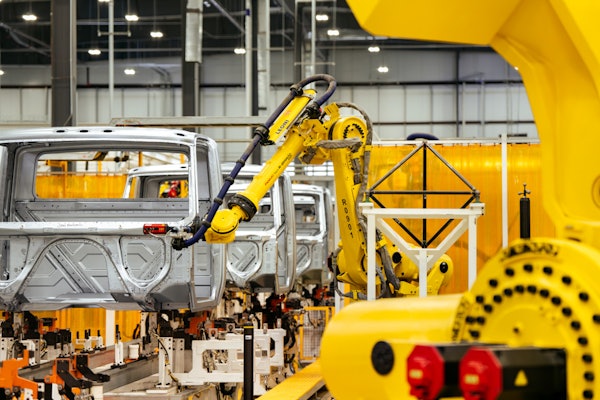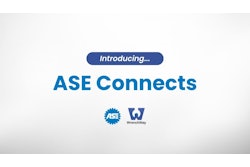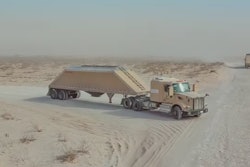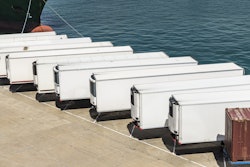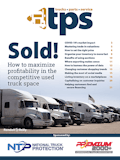By Stu MacKay, MacKay & Company
Sitting here in the relative calm between Heavy Duty Aftermarket Week 5 (or HDAW-V) and Super Bowl LXIV offers a bit of a window to reflect on some of the discussions last month in the unusually aquatic Las Vegas environment. Prior to proceeding down this path of dialogue, however, it is mandatory (from my perspective) to recognize that the Massachusetts voter revolt of 2010 coincided with HDAW-V. On that note, let us observe that the election, thank God, is finally over!
If my memory is serving me correctly – and it often does not – I’ve had the opportunity to participate in HDAW-I-II-III-IV and V. It’s been fun – and it’s been a lot of work as well.
My team has tried a number of approaches to make the HDAW program content as valuable to attendees as possible. Sometimes it’s worked well, sometimes not quite so well. But we keep on trying; maybe some day we’ll really get it right.
For several years we’ve been asked to address this issue: “How does the independent distributor take business from the truck dealer?” For several years we’ve resisted this frontal approach. We’re not nuts; truck OEMs are some of our largest clients. And, quite frankly, we really didn’t think most independent distributors were going to be able to do this anyway.
How do independent distributors take business from truck dealers?
This year, we took a different track. We convinced Terry Dotson, president and CEO of Worldwide Equipment (13 truck dealerships, 32 total locations) to square off against Bill Ryan, chairman and CEO of Point Spring & Driveshaft (10 service-focused distribution locations). The discussion was animated and friendly; the questions from the audience were on target and carefully answered by both parties. More time would have been helpful; food for thought for the next planning session for HDAW-VI.
Two comments during the discussion, one from each participant, really put the entire issue in perspective for me. When Bill was asked from whom he took customers to grow his business, his response was “other independent distributors.” Not truck dealers, mind you, other non-dealer businesses unable to effectively compete with Bill’s team. When Terry was asked how much of the market he felt was his, he responded “all of it!” Not just engines – or proprietary parts – all of it.
So what did we learn from this exchange? Independent distributors who are growing are taking business from other independent distributors – not truck dealers. And truck dealers who are growing their aftermarket business are going after the entire aftermarket, regardless of who may currently own it.
So, where does this leave the entity that we’ve called “independent” for decades? Is he really independent? Does his decision to not carry an OEM banner out front make him independent – and independent from what? What’s an independent distributor? In a word or two, it ain’t! The word “independent” may be a great label to hang on a parts distribution business – but independent it ain’t.
The heavy-duty parts distributor is dependent! He is dependent on his suppliers, dependent on his customers – and even dependent on his competitors. The degree of his success certainly may be a direct function of his capabilities and those of his team – no argument. Beyond this, however, he is totally dependent on others to let his success continue – or not. If his suppliers drop him – he loses. If his customers drop him – he loses. And if his competitors don’t give him enough opportunity to scarf off some of their business – he loses.
2010 would be a great year for aftermarket distribution to put a stake in the ground
The truck dealer has many of these same dependencies as well. But, in many states, dealer franchise laws give him an advantage. If his OEM supplier starts talking cancellation, the dealer usually has several avenues of either defense or recourse. The dealer can certainly lose his customer base to competition – and his growth opportunities to other dealers. So, objectively, he, too is dependent – but just not quite as much as the dependent heavy-duty distributor.
Over the past 20 years, dependent heavy-duty distributors have given up exactly as much heavy-duty aftermarket share as truck dealers have gained – seven points. Annual shifts are too small to show up on year-to-year comparisons. And certainly a seven point shift over 20 years is not a landslide. But I would hope that the size and direction of this shift would serve as an alarm of some sorts to dependent heavy-duty distributors who want to continue to grow.
In 2010, the heavy-duty aftermarket will begin to reverse the slide that began late in 2008 and continued all through 2009. 2010, in my opinion, would be a great year for dependent heavy-duty aftermarket distribution to put a stake in the ground – and figure out how to stop the slide in market share. If Terry and Bill are right, it will not be by attempting to take business from truck dealers. Nor will it be by circling the wagons. It will take an aggressive and progressive overhaul in both strategy and execution to make this happen!
Stu MacKay has headed MacKay & Company since its inception in 1968. MacKay & Company serves manufacturers and distribution organizations serving the vehicle, equipment and engine businesses. The company provides its clients with proprietary research and consulting, participation in multi-client studies and its DataMac aftermarket tracking services.
The views expressed in the Guest Editorial are those of the author and do not necessarily reflect the opinions, beliefs and viewpoints of Truck Parts & Service magazine.


